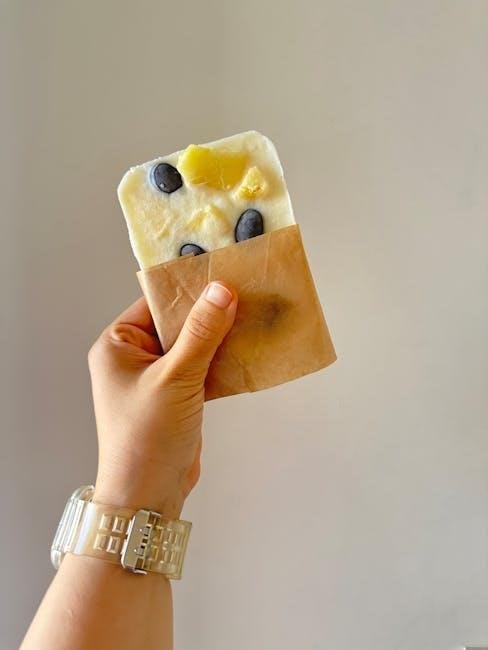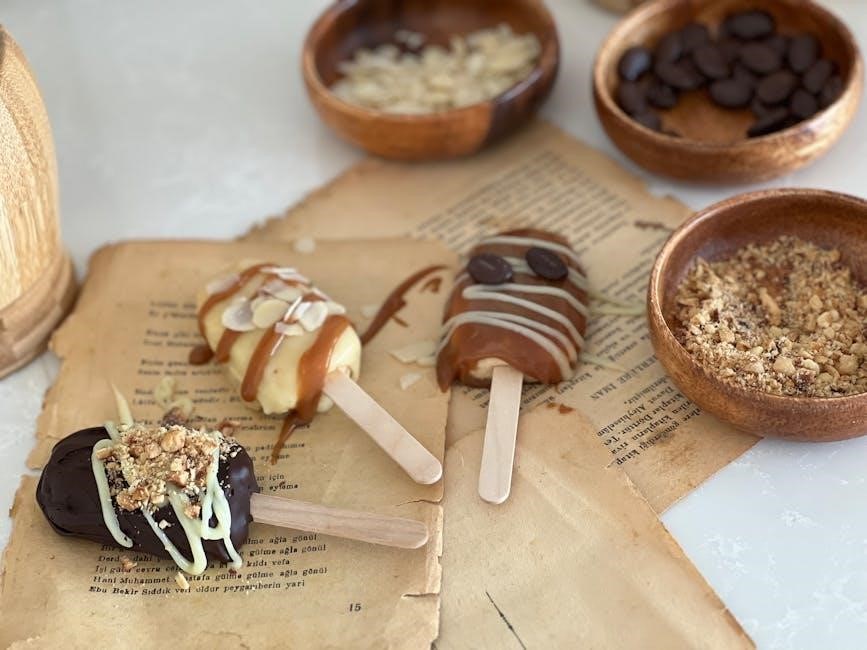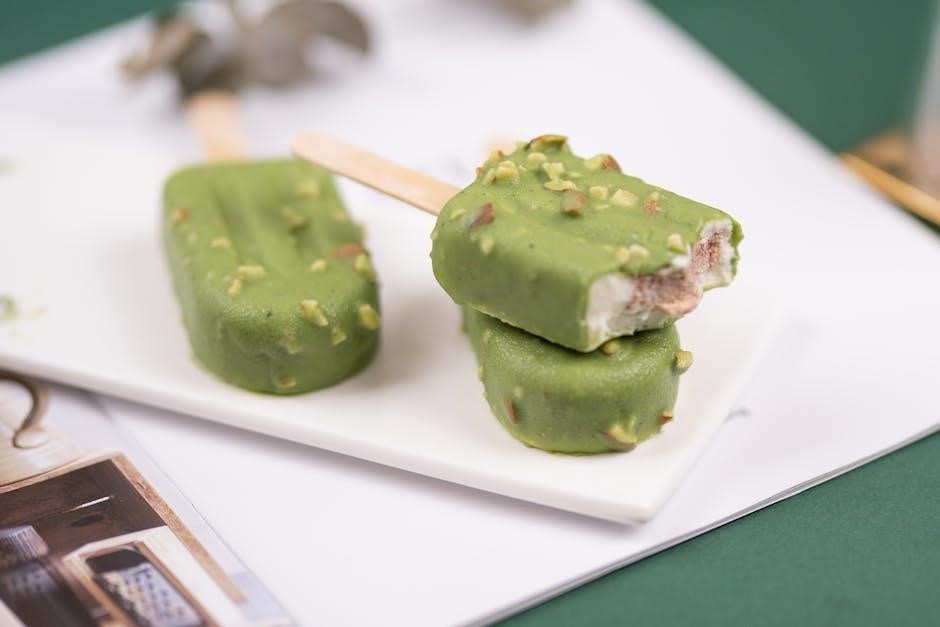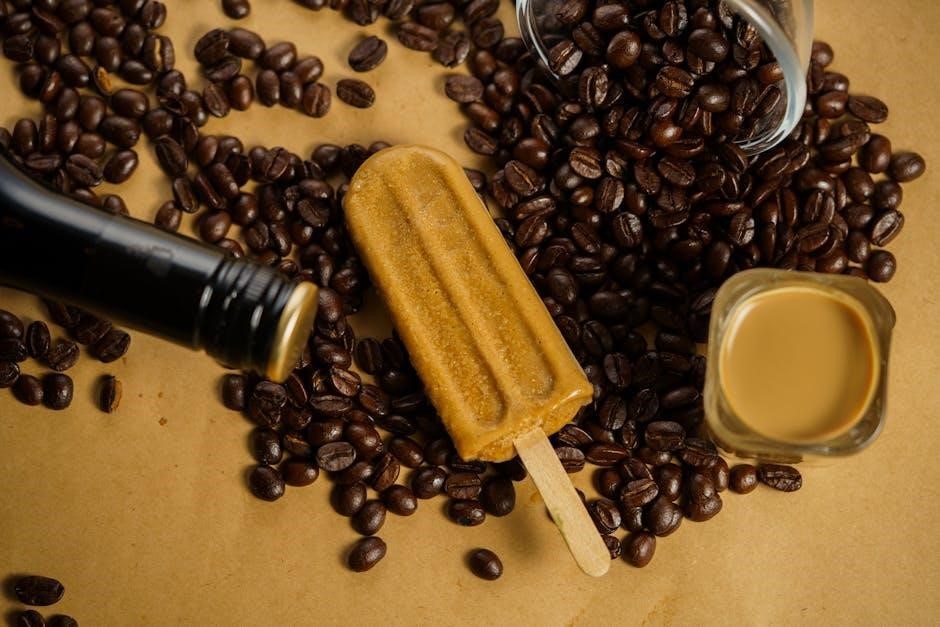Build a fun and educational STEM project with popsicle stick catapults! Easy to make and exciting to use‚ these small-scale catapults teach kids about physics and engineering while launching small projectiles․ A perfect hands-on activity for learners of all ages!
Overview of the Project
This project involves creating a simple catapult using popsicle sticks‚ rubber bands‚ and a plastic spoon․ It’s a fun‚ hands-on STEM activity that teaches kids about physics concepts like tension‚ leverage‚ and projectile motion․ The catapult is easy to assemble‚ making it a great introduction to engineering and design․ Perfect for classrooms or home learning‚ it encourages creativity and critical thinking while launching small objects like cotton balls or pom-poms․

Importance of STEM Learning
STEM learning integrates science‚ technology‚ engineering‚ and math‚ fostering creativity‚ critical thinking‚ and problem-solving skills․ The popsicle stick catapult project exemplifies STEM principles‚ teaching kids about tension‚ motion‚ and design․ It encourages hands-on experimentation‚ preparing students for future innovations and careers in technology and engineering‚ while making learning fun and engaging through practical applications․

Materials Needed
Gather essential materials: popsicle sticks‚ rubber bands‚ a plastic spoon‚ and optional items like a plastic bottle cap or Styrofoam balls for projectiles․ Ensure you have 10-12 sticks and 5-6 rubber bands․
Essential Components
The core materials include popsicle sticks‚ rubber bands‚ and a plastic spoon․ You’ll need approximately 10-12 popsicle sticks for the frame and bundles‚ 5-6 rubber bands for securing‚ and a spoon to act as the catapult’s launching arm․ These components form the foundation of your project‚ ensuring functionality and durability․ Additional sticks may be used for reinforcement or design modifications to enhance performance or stability․
Optional Materials
For enhanced customization‚ consider adding glue for extra stability‚ duct tape for reinforced joints‚ or markers to decorate your catapult․ Weights like pennies or small stones can add balance‚ while scissors may be needed for trimming sticks․ A spoon or small plastic cup can serve as a projectile holder․ These extras allow for personalized touches and improved performance without being essential to basic functionality․
Step-by-Step Instructions
Follow a simple and fun guide to build your popsicle stick catapult․ Learn how to stack‚ secure‚ and launch with easy-to-follow steps and creative engineering techniques for an educational hands-on experience․
Creating the Fulcrum
Start by stacking five small popsicle sticks and securing each end with rubber bands to form a tight bundle․ This bundle acts as the fulcrum‚ providing the pivot point for your catapult․ Ensure the sticks are aligned and the rubber bands are tightly wrapped for stability․ This step is crucial for achieving a balanced and functional catapult design that maximizes launching power while maintaining control during experiments․ Properly securing the fulcrum ensures the catapult’s effectiveness in STEM learning activities‚ making it a reliable tool for understanding physics concepts like torque and leverage through hands-on engagement and creative experimentation․
Assembling the Frame
Begin by placing two large popsicle sticks parallel to each other‚ slightly apart․ Stack smaller sticks perpendicularly between them to form the base․ Secure the sides with rubber bands‚ ensuring tightness for stability․ Insert one large stick between the smaller ones to create the frame’s structure․ Tie the sides together with additional rubber bands for reinforcement․ This forms the foundation for attaching the fulcrum and launcher‚ ensuring a sturdy base for your catapult’s mechanism to function effectively and reliably during experiments and play․
Attaching the Launcher
Take a small stack of popsicle sticks secured with rubber bands and position it between the frame’s sides․ Attach this stack to the base using additional rubber bands‚ ensuring it is tightly held in place․ This stack will serve as the launcher arm‚ allowing you to place small projectiles like cotton balls or Styrofoam balls at its end․ Secure it firmly to ensure proper tension and alignment for effective launching․
Securing with Rubber Bands
Wrap rubber bands tightly around the popsicle stick bundles at both ends to create a firm grip․ For the fulcrum‚ ensure the rubber bands are snug to hold the stack securely․ Repeat this process for the frame and launcher arm‚ wrapping bands multiple times for added tension․ This ensures stability and proper functioning of the catapult mechanism‚ preventing parts from loosening over time․

Troubleshooting Common Issues
Ensure rubber bands are tightly wrapped around popsicle stick bundles to maintain structural integrity․ Secure the fulcrum and launcher arm with multiple wraps for stability․ Proper tension prevents loosening and enhances performance‚ ensuring reliable launches every time․ Tight bands are crucial for consistent and accurate projectile motion in your catapult design․
Identifying Weak Points
Common weak points in popsicle stick catapults include loose rubber bands‚ misaligned sticks‚ and inadequate bundling․ Ensure the fulcrum is securely positioned and the launcher arm is tightly attached․ Check for gaps between sticks and reinforce with additional rubber bands if necessary․ Strengthening these areas improves durability and performance‚ ensuring consistent launches and preventing structural failure during use․
Adjusting Tension
To improve performance‚ ensure rubber bands are tightly secured around popsicle stick bundles․ If the launcher arm feels loose‚ wrap additional rubber bands around the joints; Proper tension ensures a stronger‚ more consistent launch․ Avoid over-tightening‚ as this may damage the structure․ Adjusting tension optimizes energy transfer and enhances the catapult’s range and accuracy‚ making it more efficient and reliable for experiments;

Safety Tips and Precautions
Handle sharp objects like scissors with care․ Ensure the launch area is clear of people and fragile items․ Always supervise children during construction and launching․
Handling Sharp Objects
Handling sharp objects like scissors and craft knives requires attention to safety․ Store them securely‚ out of children’s reach‚ and use protective covers․ Always ensure adult supervision when handling sharp tools‚ especially with kids․ Use stable surfaces and avoid cutting towards yourself․ Proper handling prevents accidents and ensures a safe‚ enjoyable crafting experience for everyone involved․
Safe Launching Practices
When launching your popsicle stick catapult‚ always prioritize safety․ Use soft projectiles like cotton balls or Styrofoam pieces to avoid damage․ Ensure adult supervision‚ especially for younger children․ Launch in open spaces away from people and fragile or valuable objects․ Never aim the catapult at others or breakable items․ This ensures a fun and safe experience for everyone involved․

Educational Value
Building a popsicle stick catapult fosters STEM learning by introducing fundamental physics concepts like tension‚ torque‚ and motion․ It encourages hands-on creativity‚ problem-solving‚ and critical thinking‚ reinforcing engineering and design principles while making science fun and accessible for students of all ages․
Understanding Physics Concepts
Building a popsicle stick catapult introduces key physics principles like potential and kinetic energy․ Stretching rubber bands stores potential energy‚ which converts to kinetic energy upon release‚ propelling projectiles․ The design demonstrates torque and leverage‚ showing how force applied at the fulcrum amplifies motion․ Experimenting with different tensions and angles reveals how energy transfer and friction affect performance‚ making it a hands-on lesson in motion dynamics and engineering principles․
Developing Engineering Skills

Constructing a popsicle stick catapult fosters essential engineering skills‚ encouraging problem-solving and iterative design․ By testing and refining the structure‚ learners develop critical thinking and creativity․ Troubleshooting issues like weak points or inconsistent launches enhances understanding of tension‚ stability‚ and energy transfer․ This hands-on project introduces fundamental engineering principles‚ promoting innovation and practical application of STEM concepts in a fun‚ accessible way․

Customization and Experimentation
Customize your catapult by modifying designs‚ materials‚ or mechanisms․ Experiment with different popsicle stick configurations‚ rubber band tensions‚ and projectile types to enhance performance and creativity․ Try altering the fulcrum or launcher angles to observe changes in distance and accuracy‚ fostering a deeper understanding of cause-and-effect relationships in engineering design․
Modifying Designs
Enhance your popsicle stick catapult by experimenting with different designs․ Try adding extra layers of sticks for strength or adjusting the fulcrum position for better leverage․ Cutting notches can improve alignment‚ while varying the number of rubber bands alters tension․ Explore unique shapes or extend the launcher for increased range․ These modifications allow for creative problem-solving and improved performance‚ making each design unique and functional․
Testing Different Variables
Experiment with various components to optimize your catapult’s performance․ Adjust the number of popsicle sticks to increase stability or tighten rubber bands for greater tension․ Modify the fulcrum position to alter the throwing distance and accuracy․ Try different projectiles‚ such as cotton balls or Styrofoam‚ to observe variations in range․ These experiments teach cause-and-effect relationships and refine engineering skills through hands-on learning․
PDF Resources and Guides
Download detailed PDF instructions for building popsicle stick catapults․ These guides include step-by-step tutorials and templates to help you construct and optimize your design effectively․
Downloading Instructions
Access free PDF guides online for detailed popsicle stick catapult instructions․ These downloadable resources include step-by-step tutorials‚ diagrams‚ and material lists․ Find templates and troubleshooting tips to ensure your project is a success․ Perfect for educators and DIY enthusiasts‚ these guides make building a catapult easy and fun for all skill levels․ Download now and start your STEM adventure!
Additional Templates
Enhance your project with additional templates available in PDF guides․ These include designs for advanced catapults‚ mini versions‚ and customizable layouts․ Find templates with optional components like spoons or bottle caps․ Many resources also offer customization tips to modify your catapult’s design․ Download these templates to experiment with different styles and refine your engineering skills․ Perfect for those seeking a challenge or creative twist!

Advanced Modifications
Take your catapult to the next level with enhanced designs․ Add a spoon or bottle cap for a launching platform or adjust the fulcrum for improved performance․ Experiment with rubber band tension to increase projectile distance and accuracy‚ making your catapult more powerful and precise․ These modifications offer a fun challenge and deeper learning experience․
Enhancing Performance
Optimize your catapult’s efficiency by adjusting the rubber band tension for a faster snap‚ ensuring maximum energy transfer․ Modify the fulcrum’s position to alter launch angles‚ potentially increasing distance or height․ Consider adding a spoon or container to securely hold projectiles‚ enhancing accuracy․ Experiment with additional popsicle sticks for strength‚ but balance durability with weight․ Reinforce joints with glue for stability and consistency․ Testing different projectiles like Styrofoam balls‚ which may travel farther due to lower air resistance‚ can also improve performance․ Ensuring the catapult is on a flat‚ stable surface can aid in achieving more consistent launches․ These adjustments can collectively enhance both the power and precision of your popsicle stick catapult‚ making it a more effective and reliable device for launching projectiles․
Incorporating Additional Features
Add a plastic spoon or small container to hold projectiles like cotton balls or Styrofoam beads․ Use notched sticks for better grip and stability․ Reinforce the frame with extra popsicle sticks or glue for durability․ Experiment with bottle caps or other materials as projectile holders․ Adding a trigger mechanism can improve control‚ while adjustable components allow for customization of launch angles and distances․ These enhancements make the catapult more versatile and engaging‚ offering endless opportunities for creative modification․
Building a popsicle stick catapult is a fun and rewarding STEM project that combines creativity with hands-on learning․ With simple materials and step-by-step guidance‚ anyone can create a functional catapult to launch small projectiles․ This activity not only teaches physics and engineering principles but also encourages problem-solving and experimentation․ Give it a try and enjoy the excitement of watching your creations come to life!
Final Thoughts
Building a popsicle stick catapult is a fulfilling STEM experience that combines creativity with hands-on learning․ It teaches essential physics concepts like tension and motion while fostering engineering skills․ Encourage experimentation and innovation by tweaking designs and testing variables․ The sense of accomplishment from launching a projectile is rewarding‚ especially when shared with others․ Embrace challenges‚ learn from failures‚ and enjoy the process of creating something functional and fun!
Encouragement to Build
Embrace the creativity and fun of building a popsicle stick catapult! This project offers a hands-on way to explore physics and engineering while enjoying quality time with family or friends․ With simple materials like sticks and rubber bands‚ anyone can create a functional catapult․ Don’t hesitate to experiment‚ learn from mistakes‚ and enjoy the thrill of launching small projectiles․ It’s a rewarding and memorable STEM experience for all ages!
